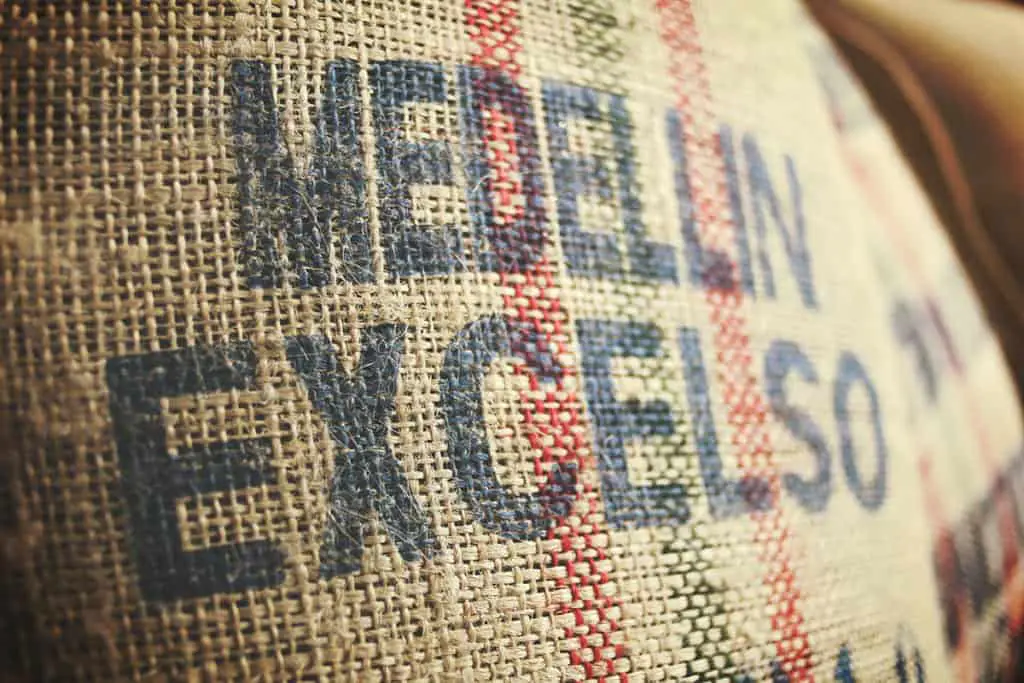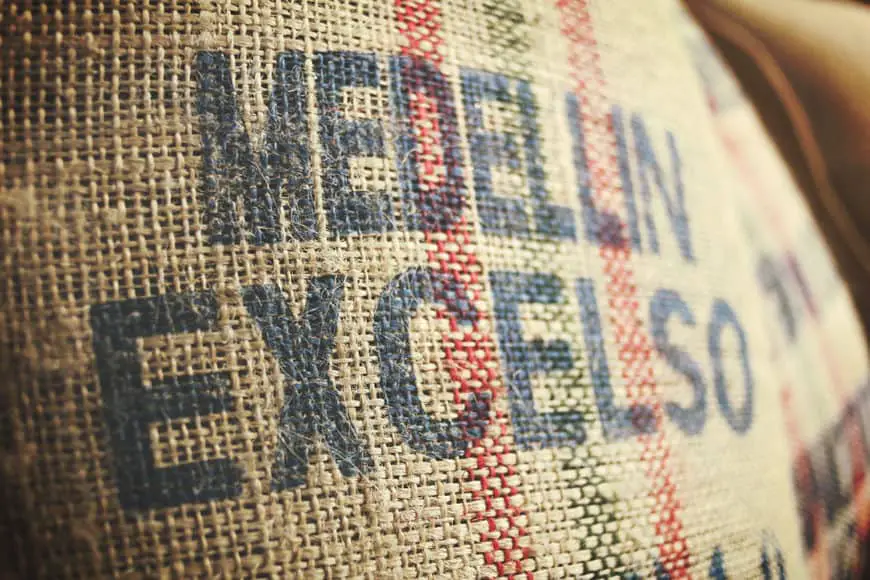
It is widely recognized, regardless of where in the world that you’re talking about, that Colombian coffee is the best quality that you can find, but why is this? What is it that characterizes it and differentiates from the crops that are cultivated in other places?
The best way to go about looking into what Colombian coffee is to begin by going back and looking at the history that has helped shaped Colombian culture and society in the present day as a whole.
What Makes Colombia Coffee So Special?
Colombia Coffee is special due to the ideal growing conditions, the way the coffee is processed and its distinctive flavors
Despite the fact that at present Vietnam has overtaken Colombia as the world’s second largest coffee producer, after Brazil, however, Colombia widely retains the title as the best in terms of quality.
Perhaps the most important thing to understand about why Colombia coffee is so exceptional is how the climate in this part of the world is so unique. It makes sense for such a sensitive crop like coffee to require such particular conditions so that it can grow healthy and provide quality grain with such a rich flavor.
In Colombia, there is immense biodiversity which, in turn, indicates a richness in its soil, air and of course, precipitation. This shouldn’t come as any type of surprise when you look at the lush vegetation that makes up such a visually engrossing slice of South America.
A big reason for this is because of its location right on the equator, which means that all year round you can expect consistently warm temperatures, and that you can plant all kinds of crops at once.
If you look at its location on a map, you’ll notice that is is rather centrally situated between the Amazon forest, the Pacific Ocean and the Caribbean, three places that are beloved for their natural wealth.
If you visit Colombia, you’ll notice that there are clouds everywhere, which wouldn’t be there if it weren’t for the ample coastline and Andes mountains that characterize so much of Colombia.
To begin with, it varies quite a bit. By avoiding the use of machinery to pick the fruits, as it would be far too ineffective, it is cultivated with great care by thousands of laborers, which are spread across an impressive 600,000 coffee producers, by hand. This means that there is a very careful control over how it is cultivated as well as how it is grown. For instance, it is intercropped in the shade of both rubber and banana trees.
There are innumerable small communities whose lives revolve around the growth of coffee trees. Today, Colombia has more than half millions farms, most of which are small, meaning less than 6 hectares, which in turn ensures a very intimate relationship and a quality control that is excellent.
The Beginning of Coffee in Colombia
An interesting things about coffee in this country is that it doesn’t originate from Colombia, but was rather brought over from the other side of the Atlantic Ocean, so no one really knows for sure how it came to arrive there. One story is that it was actually introduced somewhere around the 16th century by Jesuit priests who viewed themselves as the leaders of Colombia and directed the people there to grow coffee.
It was met with a lot of skepticism, particularly as coffee trees take a whole five years to provide cultivators with its first crop. Hardly the type of operation that laborers would have been hoping for.
Regardless of where Colombia’s appreciation for coffee really began, it certainly took a considerable amount of time for it to become the major industry that we know today.
As a matter of fact, it wasn’t until the year 1835 that Colombia began exporting its crop outside of its borders. On that year, it began sending around 2,500 bags to the U.S. alone and, just some 40 years later, the figure grew to 170,000, and by 1992 it had ballooned to 17 million!
Flavor Profile
It should then come as no surprise that there are dozens of wonderful flavors that are carefully cultivated, and this is due to the fact that it can be grown under different types of conditions, which are broken down into what are known as departments. The varying elevation, exposure to humidity such as clouds, light exposure and temperature play big roles in making unique produce.
Its taste profile is regularly described as being well-balanced (which is in large part due to its very careful selection) and having a medium, silky body that may also be thought of as clean. It has medium to high levels of acidity which correlate with its lovely bright brew.
The flavor they provide are well known for their hints of floral notes as well as traces of fruitiness that seem as though it is akin to tropical fruits that you might find in a juice or smoothie, for instance one that includes red berries or apples. The sweetness these beans offer are also regularly similar to savory chocolate, caramel and sugar cane, which often gives the cup of coffee a taste that’s similar rather similar to that of candy.
Climate and Cultivation
Keeping in mind that most of the best coffee in the country is characterized, at least in large part, by a rather elevated level of acidity, the practice of processing the beans that is relied upon throughout Colombia promotes this aspect.
The process that’s used throughout Colombia involves a water based wet processing that is able to isolate the cherries and separate them from the pulp.
This rather process has been developed in more recent years and it is favored as it accomplishes, with great efficiency, a cleaner and more fruitful bean product that is even shinier upon viewing when compares to other, more traditional processes.
Major Coffee Growing Regions
So, what are the main coffee growing regions? Well, the first one includes the sides of the three sections of the Andes Mountains that make up much of the country. Their slopes are beautiful and perfect for pinpointing the best environments for what a cafetalero is interested in.
This mountain range is broken up into three immense stretches, better known as cordilleras, that were erected over millions of years of tectonic activity. It is this topographical quality that make a lot of the coffee magic happen. If it weren’t for these immense formations, there simply wouldn’t be just the right amount of rainfall and moisture concentrated for coffee bean cultivation.
Coffee farms are set up on the sides of mountains which allows cafetaleros to choose different altitudes, which can be up to 6,400 feet high, and with different temperatures so as to achieve different types of flavors that are sought after.
Santander and Santa Marta
In the north, you’ll find the regions of Santander and Santa Marta which feature higher temperatures but at lower altitudes. What this results in is a taste that has a fuller body and a deeper flavor. For those who like a pronounced taste in their coffee, this is probably the region that will please them the most.
Quindio, Calda and Antioquia
The central regions are the ones that are situated in the world famous coffee belt and includes Quindio, Caldas, Antioquia, among others. The products from this part are the most desired, particularly, as they rich flavor with a heavy body that’s distinguished by its considerable acidity and treats the palate with hints of chocolate and nuttiness in their ultimate taste.
Huila, Nariño and Cauca
As for the southern region in Colombia, which includes Huila, Nariño and Cauca, you’re looking at the higher elevations around that make for a higher acidity and more flowery aromas that characterize notes that are much more complex and drawn out than the northern regions.
It should be noted that, traditionally, in Colombia beans are can be roasted dark, something that you can see yourself when comparing them from other parts of the world.
This means that there is an active effort to suppress their natural flavors to cater to a broad market. The interesting thing is that they can be roasted to be quite dark without turning too bitter, which makes them a wonderful selection for any number of espresso based drinks.
Popular Coffee of Colombia
Well, these would be directly related to the different regions where they are grown, known as the Colombian coffee growing axis, namely Medellin, Manizales and Armenia (usually marketed under the acronym MAM). These may be found in central Colombia, which provides them with a higher degree of acidity, for instance compared to those farther east.
In Colombia, the beans of choice are arabica. This is the only kind that’s produced in the country purely for reasons of superior taste. You don’t have to be a coffee connoisseur to appreciate this choice. So with that let’s dive into why some specific types of arabica beans are considered to be among the best that this lush landscape has to offer.
Caturra beans are quite popular and were originally brought over from Brazil, where they had first been developed. They’re easily considered to be among the best around due to their pronounced acidity and less developed body that appeals to those who appreciate a softer yet accented flavor.
As far as true smoothness goes, Castillo is widely considered to be very agreeable and is thought to have a genetic closeness to robusta beans which has brought under a lot of scrutiny.
In terms of popularity, what the average Colombian drinks with the most regularly is Tinto coffee, which means inky coffee due to its thicker and more concentrated nature. You can find it on almost any street, and despite not being the best it is representative of the country’s coffee culture as a whole.
To get the best that you can get, these would be the coffee beans that are grown on volcanic soil at elevations as high as 6,000 feet. If you want strong flavors you’re sure to end up impressed as they have notes of everything from cherry chocolate and malt to walnuts, and even wood!
Final Thoughts
Back in 2011, Colombia was declared a World Heritage Site by the UNESCO because of its magnificent 2.2 millions of acres that make up its ¨Coffee Cultural Landscape.¨ It has grown to help define the identity of a whole nation and serves as a powerful reflection about the place of mankind with respect to the nature that enriches the very meaning of life for all who enjoy they captivating aromas that it has to offer.
People come from all over the planet to witness for themselves the practices that make for the tastiest coffee that graces the cups of coffee lovers everywhere. What’s truly interesting is how its taste is truly a reflection of the richness in the land and the spirit of the people that profoundly love where they live.
Colombia is a contagiously lovely place that has come a long way to bring some of the most savory flavors of Mother Earth to the tongues of so many who truly do feel a connection with dramatically captivating landscapes, both natural and cultural, that cements this South American country as a continuous source of inspiration and delight!

